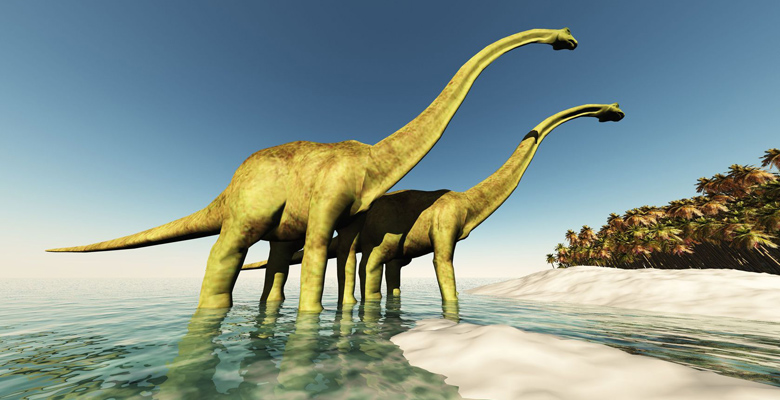The evolution of large-bodied dinosaurs

Scientists from LJMU, working with external researchers, have examined the evolutionary history of sauropod dinosaurs using computer models.
Sauropod dinosaurs include the largest land animals to ever have lived. Some of the more well-known sauropods include Diplodocus, Apatosaurus and Brontosaurus. They are renowned for their extremely long necks, long tails, pillar-like legs, and small heads in relation to their body.
The team, including LJMU's Dr Peter Falkingham, used three-dimensional computer models to reconstruct the bodies of sauropod dinosaurs and analyse how their size, shape and weight-distribution changed over evolutionary time.
They found support for changes in body shape coinciding with major events in sauropod evolutionary history. The early dinosaurs that sauropods evolved from were small and walked on two legs, with long tails, small chests and small forelimbs. The team calculate that this body shape concentrated their weight close to the hip joint, which would have helped them balance while walking bipedally on their hind legs.
As sauropods evolved they gradually altered both their size and shape from this ancestral template, becoming not only significantly larger and heavier, but also gaining a proportionally larger chest, forelimbs and in particular a dramatically larger neck.
The team’s findings show that these changes altered sauropods’ weight distribution as they grew in size, gradually shifting from being tail-heavy, two-legged animals to being front-heavy, four-legged animals, such as the large, fully quadrupedal Jurassic sauropods Diplodocus and Apatosaurus.
The team found that these linked trends in size, body shape and weight distribution did not end with the evolution of fully quadrupedal sauropods. In the Cretaceous Period, the last of the three ages of the dinosaurs, many earlier sauropod groups dwindled. In their place, a new and extremely large type of sauropod known as titanosaurs evolved, including the truly massive Argentinosaurus and Dreadnoughtus, among the largest known animals ever to have lived.
The team’s computer models suggest that in addition to their size, the titanosaurs evolved the most extreme ‘front heavy’ body shape of all sauropods, as a result of their extremely long necks.
Dr Falkingham said: "It’s very easy to think that sauropods are all very similar – long necks, long tails, and a big body in the middle. But there’s a actually a lot going on; the general body shape is changing, evolving, over the millions of years that these animals walked the earth. Early sauropods are fundamentally different in shape to those that were alive just prior to the dinosaurs going extinct at the end of the Cretaceous Period.”
The full paper, entitled ‘Temporal and phylogenetic evolution of the sauropod dinosaur body plan,’ is published by Royal Society Open Science.
Dr Falkingham's animation of the three-dimensional computer model can be viewed
.
